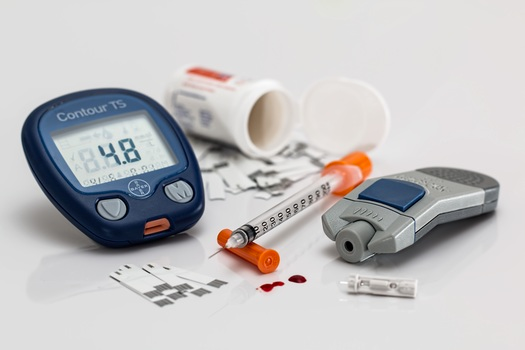Improving diabetes research & treatment with clinical data integration
Oct 24, 2016

1 in 11 people worldwide live with diabetes. That’s over 415 million people suffering from a life-threatening disease that is also the leading cause of cardiovascular disease, blindness, kidney failure, and lower-limb amputation. While decades of research and treatment have lead to enormous improvements in both prevention and treatment, the disease, which already represents 12% of the world’s health expenditure (~$673 billion!), is growing at a frightening rate. If advancements in prevention and efficiency gains in treatment aren’t made quickly, the world risks a staggering numbers of lives lost, as well as dire financial ramifications that could threaten the stability of countries worldwide.
What can be done
This is precisely where the next generation of healthcare technology solutions targeting diabetes come into play. Some of the world’s brightest minds are working to slow and someday solve this worldwide epidemic, and they are introducing revolutionary new ways to prevent, diagnose, treat, and most importantly, live with this chronic ailment. From new ways to monitor blood glucose levels and automatically administer insulin treatments, to sophisticated lifestyle decision education programs that help prevent and minimize the effects of the disease, innovators are rushing into this space.
These advancements are incredibly exciting and may be able to slow the spread of diabetes while providing cost-effective ways to manage its effects at the same time. But, for this future to be realized, one key thing must happen first: easy and efficient access to electronic health record (EHR) data. This is critical because patients, providers, and healthcare technologists must share data to ensure that the most accurate and up-to-date patient information is available to all. As it stands, only providers can access and edit patient's medical records; by integrating new technology that allows modern devices and patients to provide additional valuable health information, we have the power to expand available health data and what it can do.
Seeing what works is how iteration arrives at a widespread solution, and the key to this succeeding is the ability to expand the scope of accurate, readily available patient data. By utilizing the data provided by both doctors, medical devices, and patients, we will not only improve immediate care, but be able to analyze more cohesive data to identify the successes and trends which will unlock the secret to slowing, preventing, and curing diabetes.
How Redox helps
We built our solution because we believe in the tremendous value of EHR integration and our ability to execute this critical need. Digital health organizations need access to clinical data stored within health system electronic health records in order to support patients using their tools and providers depending on their solutions. This data allows technology companies to become much more sophisticated in the treatments they prescribe and ultimately the results they deliver, but these solutions are entirely dependent upon accessing patient data—without completing this first step, their potential will remain only that.
With Redox, a digital health solution can automatically enroll new patients as they schedule appointments with specific health system providers. We can supply them with entire past medical histories. Depending on the scope of their application and relationship with the health system, we could keep them up-to-date with all relevant medical events that the patient experiences for the rest of their life.
Redox helps diabetes-focused digital health applications send self-reported patient data back to health systems to be used by clinicians. We support the real-time integration of remote monitoring data of vitals like heart rate, cholesterol levels, and blood pressure that can trigger alerts. Applications use our platform to report trend data discretely or in rich PDF reports that can be analyzed by providers. No matter what the scope of data they collect or the way clinical customers want it received, we integrate this information back into the EHR in a seamless, scalable manner that expands the provider’s ability to positively impact patients’ lives.
The future of diabetes
Diabetes is an epidemic that needs to be addressed by the world as a community. We need the best researchers, clinicians, and technologists working together to find a way to get this disease under control—the lives at stake and financial implications are too great to go unaddressed or be left to one party to solve.
The technical difficulties of sharing and integrating data in a meaningful way are no longer barriers, and there are incredible partnership opportunities that can allow us to work together to advance available treatments. If you are working on creating a technology solution focused on the prevention, diagnosis, analysis, or treatment of diabetes, please talk with us. We are experts in clinical health integration working with some of the leading technology companies and healthcare organizations in the country. We want to facilitate clinical data integration so that we have a genuine shot at solving this problem.
We’d love to hear more about the solution you are developing and see whether integration with health system databases can improve your solution. We are happy to outline what data elements are readily available, what theoretical workflows exist, and how they can be implemented quickly.
